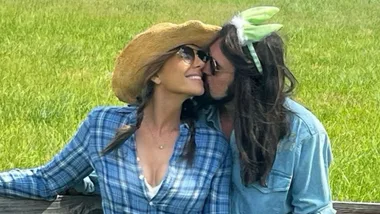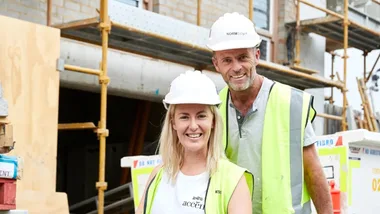Last month, The Weekly’s News Editor, Bryce Corbett visited Jordan and Syria to compile a special report on the refugee crisis unfolding there — and meet the Australian in the middle of it all.
Given that words — and a fair-to-middling command of them — are pretty much my job, it’s not often that I am lost for them. But last month’s visit to the Zataari refugee camp in Jordan and the subsequent day I spent at the Syrian border watching families flee to safety are experiences that are hard to describe.
The UN workers who had organised my trip, clearly keen to get a sense of what I might eventually write about it, kept asking me what I made of it all. “So, what did you think?” they asked as we left yet another tent full of refugees who had matter-of-factly described how their homes in Damascus had been bombed.
And the problem was, it was hard to know what to think. The size of the camp (130,000 refugees and counting), the scale of the problems faced by these people, the distant thudding of artillery shells, across the border some 30 kilometres away — made it all rather difficult to process on the spot.
And so I remained mostly silent — determined to soak it all up, take it all in and faithfully record in my notebook the hard facts of the experience of each refugee family I met.
Hopefully my story, in this month’s Australian Women’s Weekly, combined with the excellent photographs of my colleague, Nick Cubbin go some way to capturing the tragedy currently unfolding in the deserts of northern Jordan.
We travelled in the company of Andrew Harper — the Australian-born head of the UN Refugee Agency in Jordan. The man is an inspiration. One of those salt-of-the-earth Aussie heroes whose no-nonsense approach to managing what is currently the biggest humanitarian crisis on the planet has made him the United Nations’ go-to guy for emergency response.
In Zataari, we visited a rudimentary field hospital where five babies a day are born. We watched children (who make up 60 percent of the camp’s inhabitants) kick soccer balls on dust-blown patches of dirt as their mothers queued patiently for the day’s food rations. Some families have been in Zataari for over a year.
With no real end in sight to the civil war in Syria, they could easily be there for at least another year — perhaps longer. That the UN is frantically building infrastructure for a second camp in Jordan, six-times the size of Azraq and capable of receiving more than half-a-million refugees, speaks volumes for the low expectations experts in the region have for a speedy resolution to the Syrian crisis.
Meanwhile, an entire generation of Syrians is gradually being lost out there in the Jordanian deserts. Education is scant to non-existent, the conscription of men to the war effort in Syria (and the death of at least as many) has meant traditional family and social structures have been upended.
Andrew Harper and his team might be able to truck in the four million litres of water required every day to sustain the camp and its inhabitants. They might just be able to manage the health and sanitation and food requirements of this tent-city in the desert, but ultimately all they can do is keep these people sheltered, fed and relatively safe.
Ensuring they are not permanently scarred by living without a proper home or any of the benefits of living in a normal community is something they have no power over.
But as overwhelming as the Zataari camp experience was, it ultimately paled in comparison to the experience we had at the Syrian border. Under the midday sun. in the middle of a rocky desert, we stood on the border and watched as a family of five dragged their meagre collection of belongings through the dust.
They had been walking for twelve hours through the no-man’s land between Syria and Jordan when our convoy intercepted them, having been dropped off the night before under the cover of darkness to avoid sniper fire. Their border crossing would have been quicker were it not for the fact one of their teenage daughter had picked her way through the rocky terrain on crutches.
A day later, back in the relative comfort of my hotel room, I watched the first disturbing TV images emerge of civilians in Damascus who had been killed in a chemical weapons attack.
And now, while world leaders clash over the best course of action in Syria, the flow of refugees grows ever more steady. An estimated two million Syrians have already fled to neighbouring countries. If Andrew Harper was a betting man, he’d wager that number is set to grow exponentially.

For Bryce’s special report from the frontline of Syria’s refugee crisis, see the historic 80th birthday anniversary edition of the Weekly, on sale now.












